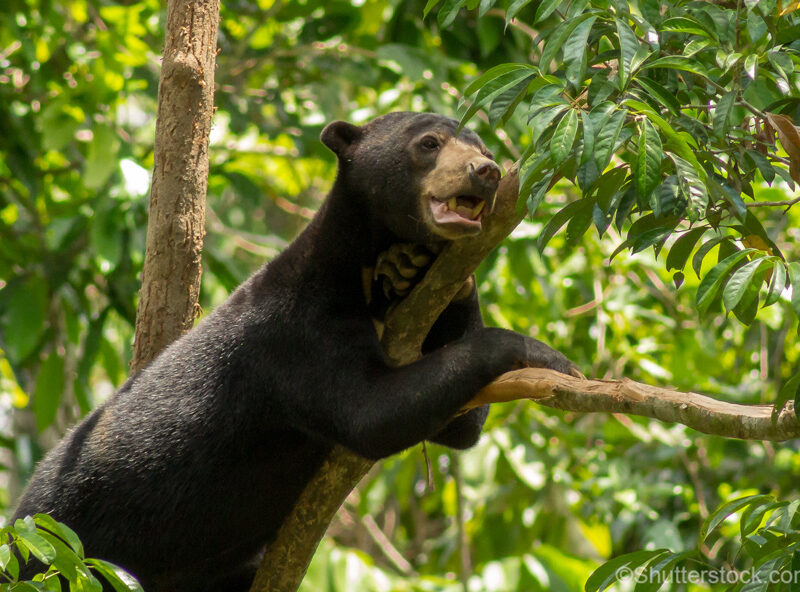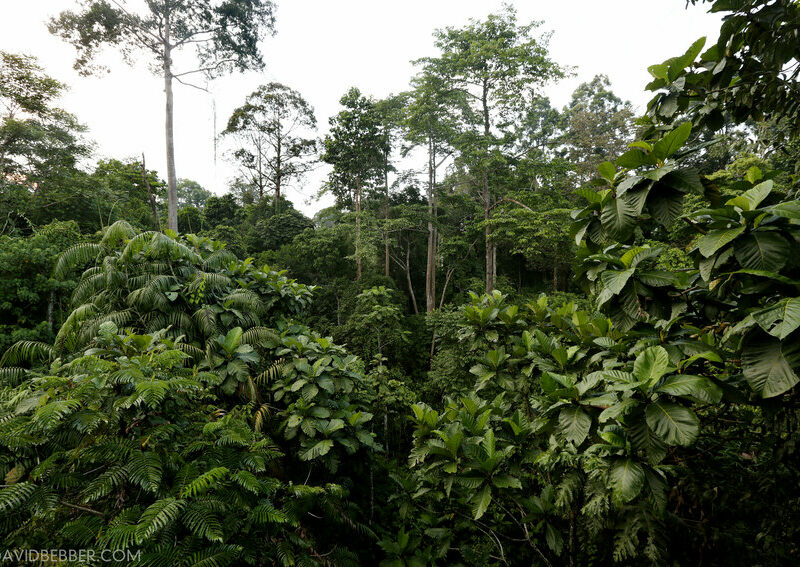Sun Bear
Species Data
Class: Mammalia
Order: Carnivora
Family: Ursidae
Scientific Name: Helarctos malayanus
IUCN Red List status: Vulnerable
Description
Sun Bear is the smallest of all of the world’s eight known bear species. Weighing in at 60-150 pounds (or 27-68 kg), their spare build enables them to easily move throughout the trees.
The Sun Bear’s name was coined due to the belief that the golden, cream or white crest on their chest represents the rising sun. Each Sun Bear has a unique crest but they all share the same sleek coat of black fur. While short to prevent overheating in a tropical climate, the fur is thick and coarse to help protect these bears against heavy rainfall and branches.
Other Sun Bear traits – its stocky, muscular build with small ears and short muzzle – have earned the species another popular name, that of ‘dog bear’. Its paws are large and soles are bare, an important feature for a mammal known for its arboreal lifestyle.
Behaviour
Sun Bears spend a considerable amount of time within treetops, a behaviour that has seen them nicknamed as ‘basindo nan tenggil’ (or ‘he who likes to sit high’) in Malaysia.
Nocturnal roamers by nature, Sun Bears spend their time searching the canopy for fruits such as figs, making them an extremely important species for seed dispersal. They will also however feed on termites, ants, insect larvae, rodents and honey, using their perfectly adapted, long and curved claws to dig through the bark for insects and their tongue – at 18 inches, the longest of any bear in the world – to snatch honey straight from the hive.
Sun Bears’ elusive behaviour and avoidance of humans means little is known about their social structure or reproductive behaviour in the wild. However, it is believed that this species does not hibernate like other bears and is largely solitary, even if it will sometimes form – and travel in – breeding pairs. Researchers believe the species does not follow a strict breeding season, with mothers thought to delay pregnancy until food availability and other conditions are optimal.


Habitat
Formerly widespread in the lowland forests of Southeast Asia, the Sun Bear now occupies a patchier distribution within the Asian mainland and the islands of Borneo and Sumatra.
Sun Bears are more common in lower elevation forest but have been detected up to 3,000m above sea level. Their distribution largely depends on the level of disturbance from human sources, with population densities increasing the greater the distance is from settlements, roads and logging.
Threats and Conservation
The IUCN’s Red List currently classifies Sun Bears as Vulnerable. Global populations are thought to have declined by over 30% over the past 30 years, but the data necessary to uplist the species to Endangered status is seen as lacking.
Sun Bear is predominantly threatened by habitat loss through clearance for agriculture and commercial logging, resulting in conflict with humans as bears are forced to crop raid within palm oil plantations and others.
The challenges for the species are compounded by increasingly frequent forest fires all across its range. Blazes are known to not only impact Sun Bears directly but also trigger a reduction in the insect pollinators – fig wasps in particular – that are key for long-term availability of fruit, which makes up more than 50% of a Sun Bear’s diet.
A third threat for the species comes from the bear bile trade, whereby Sun Bears are hunted for their bile or other bear by-products for traditional medicines. Although outlawed in 20 of China’s provinces, bile farms are growing increasingly popular amid a seeming lack of enforcement within these areas and elsewhere.
For years now and continuing with two new purchases to expand the Pangi corridor in 2021, donations from WLT supporters have been helping partner Hutan to protect the rainforests of the Kinabatangan Floodplain, a confirmed home of the Sun Bear.
